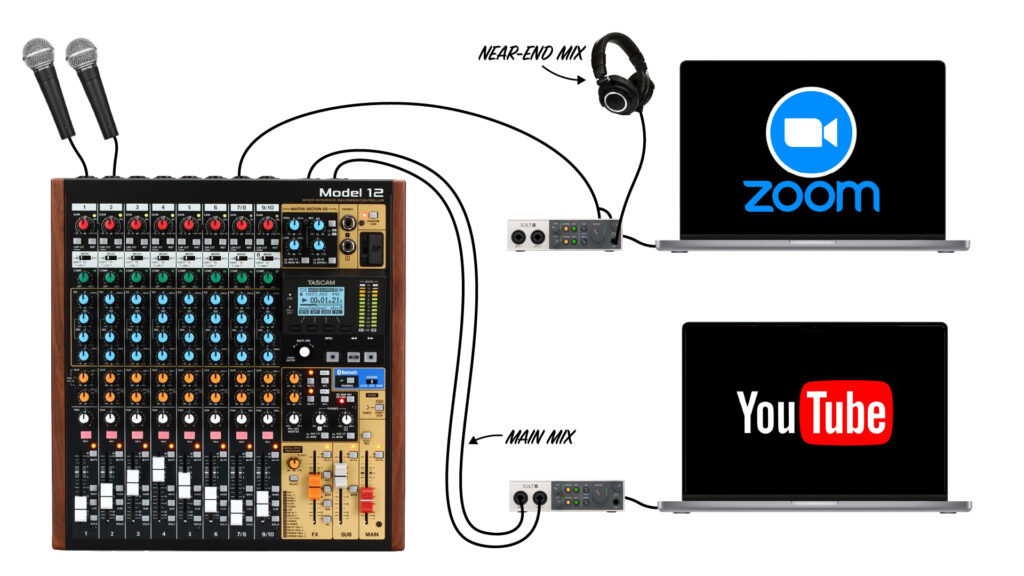Introduction
Mix-minus, an old-school term hailing from the era of analog audio mixers, has been a key element since AM radio stations started using them for remote telephone calls. Notably, this term remains relevant today due to modern internet-based technologies.
Mix-minus enabled the prevention of echo, that is, the remote caller’s voice bouncing back to them. As we transition into the present, mix-minus finds its application in both analog and digital audio mixers and even in software audio mixers.
However, its use varies when we consider it for broadcast recording versus local monitoring, regardless of the medium being audio-only or video. This article attempts to distinguish these applications and offer a clear understanding of both.
Mix-Minus for Recording/Broadcast vs Monitoring
Substantial confusion surrounds the differentiation between mix-minus for broadcast or recording and mix-minus for local monitoring. Setting an example for clarity, consider a studio set-up with local participants.
Suppose these participants are employing dynamic cardioid USB microphones, for example, the soon-to-be-reviewed RØDE PodMic USB or the Shure MV7+. By dynamics, isolation is heightened, reducing crosstalk. These microphones, equipped with Digital Signal Processing (DSP), offer direct monitoring via a 3.5mm headphone jack. This allows participants to experience latency-free hearing of their voices while also listening to the mix-minus from their software audio mixer.
But the catch here is that the “mix-minus” fed into their ears excludes their own voices since they already experience latency-free direct monitoring through their dynamic mics. Hence, the mix-minus should only involve all other sounds, ensuring that the participant’s voices are not looped back.
Demystifying Service Providers
Call In Studio is a unique service facilitating call filtration from the general public using a public phone number. This service may employ either voice-to-text technology or human operators.
On the contrary, Cleanfeed provides studio-quality audio from distant guests or co-hosts, mainly when they are equipped with a professional microphone and a robust internet connection. Here, sessions are usually planned in advance with a link, unlike Call In Studio, where calls are typically unscheduled and unknown.
Google Meet, Microsoft Teams, Jitsi, Skype, and Zoom are predominantly conference-quality services. However, offering 48 kHz, if Original Sound Mode is activated, Zoom stands out despite its criteria for special requirements like the use of Ethernet, with Wi-Fi strictly prohibited. These are all apt for live use.
Services like Riverside, Streamyard, and Squadcast offer the additional functionality of optional local recordings. It helps in times of an internet glitch but requires post-editing to be useful, deeming it odious for live or live-to-drive productions.
Lastly, SkypeOut (rebranded as Calls to mobiles and landlines) enables spontaneous phone calls to specific organizations for impromptu responses with studio-quality audio from the host/presenter, rendering a natural aura to the listening experience.
Sum up
In conclusion, while ‘mix-minus’ might sound like a yesteryear term, its relevance in today’s tech-driven era is undeniable. Its appropriate understanding and application can turn into a critical game-changer in delivering a superior audio-visual experience.
